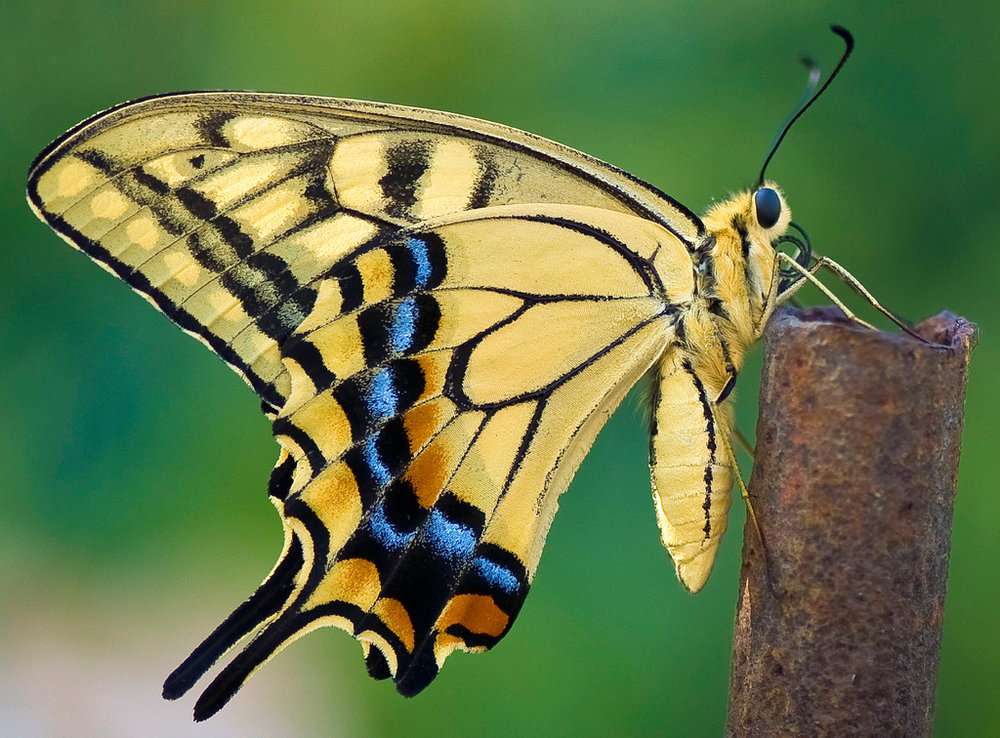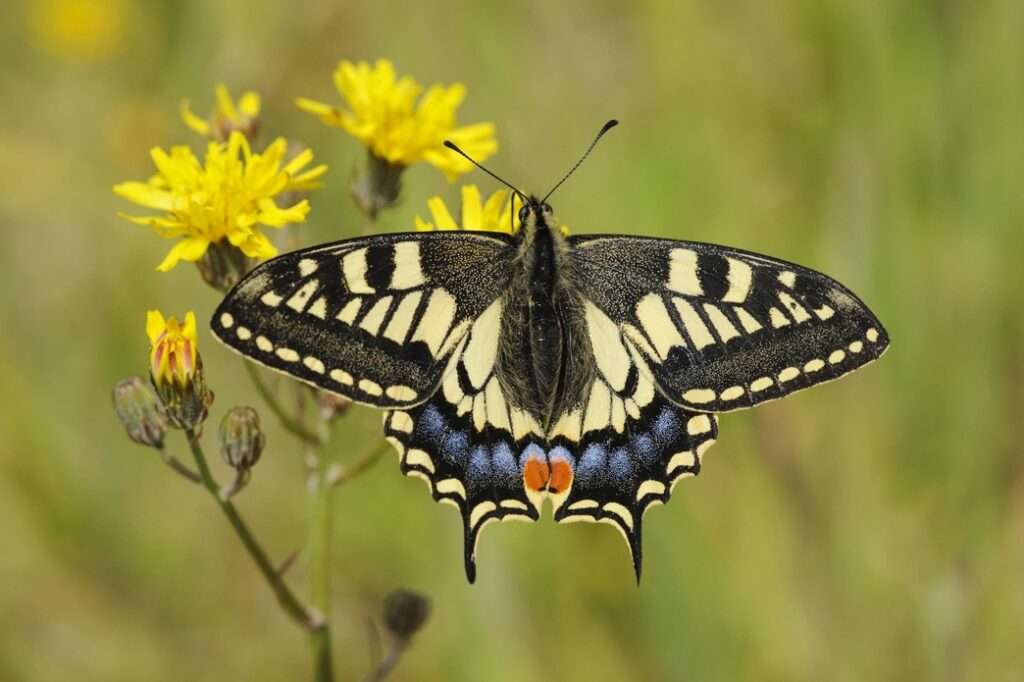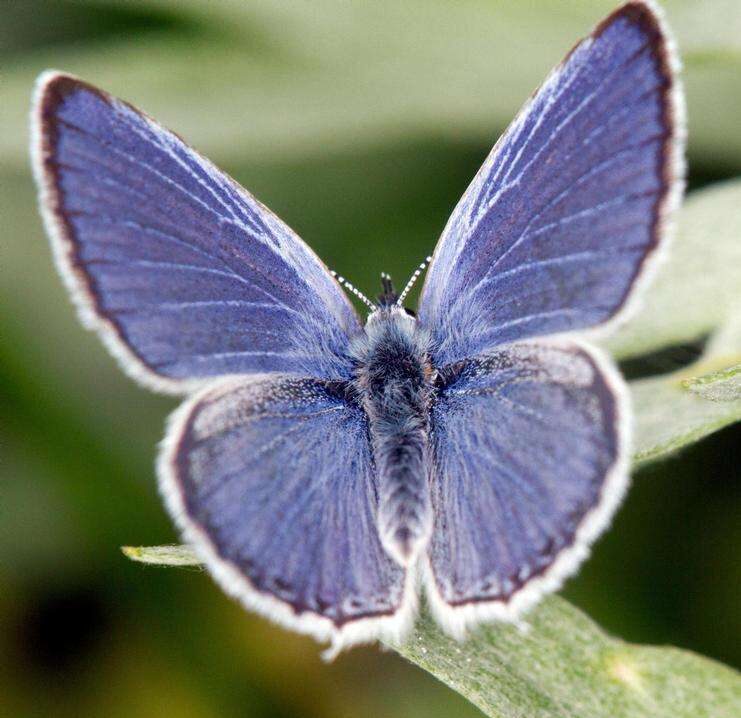
A member of the Papilionidae butterfly family is the Old World swallowtail, or Papilio machaon. The butterfly is often referred to as a swallowtail or a common yellow swallowtail (a common name applied to all members of the family, but this species was the first to be given the name).
Amazing Facts
- The specific name Machaon is derived from the Greek poet Homer’s work in which the son of Asclepius Machaon appears.
- Although all members of the family are commonly referred to as “Swallowtails,” this particular species was the first to get the moniker.
- It is the biggest butterfly that lives in the UK.
Appearance
The stunning coloring of Papilio machaon is black over a base hue of yellow. The back wings have blue and red markings. The odd butterfly that exhibits melanism, a black color on the wings instead of yellow, is a mutation or variation on the natural color of swallowtails. Compared to most other butterflies, they are fairly big. Old World swallowtails have two overlapping wings, resulting in a wingspan that ranges in length from 5.5 to 8 cm. Even some females have forewings that are longer than 8.8 cm.

Diet
Papilio machaon, in its caterpillar form, feeds on milk parsley that is grown in several regions of Europe as well as other plants, preferably those in the parsley family. The leaves of their host plant are what these young caterpillars prefer to consume. Once they have matured a little, these caterpillars like to consume the blooms on these plants. Adult butterflies consume the nectar of these blooms.
Predator
The most frequent predators are tiny birds, spiders, and insects.
Habitat
Papilio machaon butterflies are mostly found in Europe and Asia, although populations are dwindling and becoming more limited. Canada, Alaska, and California are more locations where Papilio machaon can be found. Old World swallowtails can be found worldwide in a variety of environments. They live in grasslands, hilltops, tundras, woodlands, mountains, and other temperate regions at various heights. Some can even be discovered in the Arctic and subarctic regions of the world.
Table





